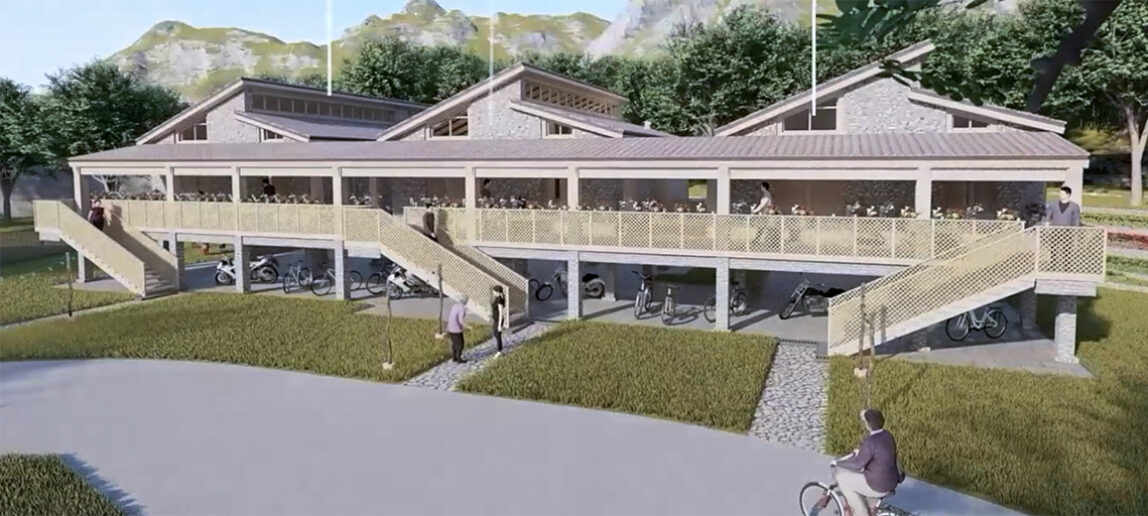Students team with counterparts from Vietnam to earn awards in national design contest
A multi-unit residential design that produces as much energy as it uses — a net-zero proposal — that could serve as an affordable housing prototype in northern Vietnam earned two awards in the Solar Decathlon, a nationwide design contest sponsored by the U.S. Department of Energy.
Students in all three departments of the Texas A&M School of Architecture teamed with students in the Hanoi University of Civil Engineering in Vietnam to create the design, which earned a fourth-place finish and a Team Spirit Award in the decathlon’s attached housing, or multi-unit, division. The two student groups were led by Dr. Liliana Beltran, Texas A&M associate professor of architecture.
A portion of the Texas A&M team joined other student teams from universities across the country who presented their final Solar Decathlon designs April 22 at the National Renewable Energy Laboratory in Golden, Colo.
“The project was beautifully conceived and designed, as was the presentation and the analysis of each contest section,” said the contest jury. “It was an interesting choice for a project location — definitely challenging, but we loved that you partnered with a local school and construction team.”
The jury also commended the students on a good use of form in their climate responsive design.
“The project is clearly driven by place and culture. Renderings, sections, and video were amazing,” said the jury.
The 3,120 square-foot, one-story design features three independent housing units shaded by an outdoor veranda that serves as a shaded main entrance and gathering space, for a site in northern Vietnam’s Khuoi Ky village.
The design includes openings on both sides of each of the building’s three residences to provide more efficient daylighting and natural ventilation for each residence. The elevation of the house over columns, along with other landscaping measures, helps protect the building from flooding and landslides.
High-efficiency, south-facing solar panels on the roof generate enough energy for the building year-round; Energy Star-certified appliances and an air conditioning system that operates based on where people are in the house also saves energy.
The students’ design was partially based on a study of a neighboring residence, and the final design incorporated additional solar heating, shading and local building materials.
The final design, said the students in their presentation materials, is also a proposal for an environmentally friendly, economically viable, and sustainable building type in the region.
Also in this year’s Solar Decathlon Build Competition, a Texas A&M team of architecture, planning, construction science and architectural engineering students won the decathlon’s Director’s Award with an innovative design.
Since its inception in 2002, the Solar Decathlon competition, one of the U.S. Department of Energy’s most successful outreach efforts, has challenged more than 25,000 students to create efficient, affordable buildings powered by renewable energy.
Contest organizers aim to provide participating students with unique training that prepares them for a clean energy workforce. They also look to educate students and the public about the latest technologies and materials in zero energy design and technologies, smart home solutions, and high-performance buildings.
Texas A&M also entered the Solar Decathlon competition in 2007 and 2002.


